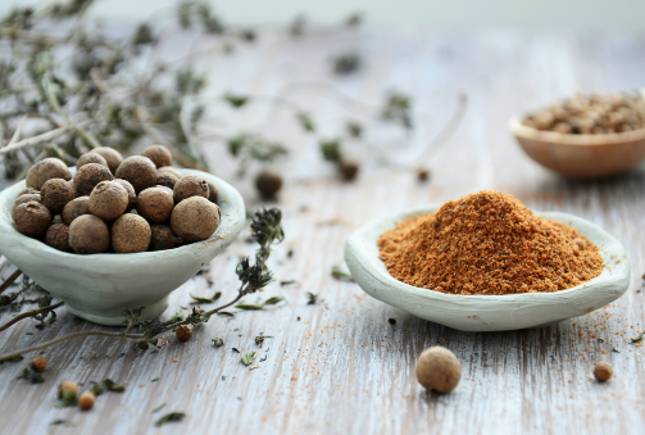Find out what to look for in skin products for your precious little ones, and why in this overview of common irritants in babycare products.
It is not uncommon for an infant to develop an allergic reaction to a whole range of baby products, and a little extra knowledge and insight can make it easier for you as a parent to identify the best and safest products to purchase. In the past, studies have revealed dangerous chemicals used on the surfaces of toys and other commodities such as multivitamins for babies. Even dietary proteins are known to cause many allergies in infants. There are concerns with topical lotions and creams that, despite their good intentions, can actually irritate baby skin or worsen an existing skin condition. Let’s look first at the skin, and its role in protecting infants from the external toxins.
Functions of the Skin
- Acts as a physical barrier to chemicals, bacteria, fungi and viruses
- Protects us from physical impact
- Vital part of the immune system
- Protects us from UV rays
- Production of vitamin D after exposure to sunlight
- Absorbs nutrients and other substances topically
- Regulates body temperature
- Receives and communicates sensations to the brain

Skin is a vital organ of detoxification and elimination, and when it comes in contact with foreign agents, becomes an important protector to the rest of the body. It is in fact, the largest organ of the human body!
Keeping skin healthy requires maintaining hydration, oil and acidity levels, clean and unclogged pores, and essential nutrition through the diet. When any of these qualities are compromised, the ability of our skin to function normally is diminished.
And while we often think of the potential benefits and dangers of substances we ingest through the mouth, we tend to forget that the skin is a major absorption organ too. The surface of baby skin is considerably more permeable than adult skin, so it will absorb an even greater amount of product applied to the skin. The reality is that babies absorb a lot.
For this reason alone it is worthwhile ensuring that your babys skin care products are as pure and toxin-free as possible. For example, mineral oil is used in many baby product lines, however not only does mineral oil introduce foreign toxins into a babys body, it also sits on the skin and creates a mask through which the skin cannot breathe.
Mineral oil
…is a by-product of commercial processes involving crude oil, and when applied to the skin will produce an oily coating. As a moisturiser it is barely effective, because it is so poorly absorbed and does not allow the skin to breathe. This hasn’t stopped many commercial manufacturers from using it in their baby ranges though because it is cheap to produce. Natural emulsions such as beeswax, jojoba oil, sweet almond oil and sesame oil are a much better alternative. Knowing that just about anything that sits on a babys skin, is likely at some stage to enter their mouths via the fingers also should discourage one from purchasing products containing mineral oil.. On ingredient lists you will find mineral oil listed also as petroleum, paraffin or paraffin oil.
Natural Alternatives to Mineral Oil : Sesame oil, Sweet Almond oil, Grapeseed oil, Jojoba oil, Evening Primrose oil
Propylene glycol
….is another derivative of mineral oil to look out for, as it has been linked to skin irritation, eczema, seizures and respiratory problems. It takes an infant over three times as long as it does an adult, to clear this chemical from the blood stream so the risk of toxicity is much higher. It is for this reason that many substances deemed completely safe for use on adult skin are not suitable for babies.

Calendula officinalis Picture credit: DewDrop
Cleansers – natural is better
When selecting cleansing products for babies, aim for organic and natural ingredients. The gentler the product, the healthier it is for a babys’ delicate skin. The concept of wiping out vital natural oils from a babys skin is a concerning prospect as long term use will sabotage the natural development of healthy self-protecting skin. Centuries ago when the paradigm of healing was far different, it was believed that the human body had an innate ability to adapt and heal on its own. A little of this ancient wisdom is still pertinent today as we tend to over-cleanse and scrub away all of our natural defences in the skin. A simple oil like calendula oil makes a good alternative as a cleanser and moisturising emulsion, especially when blended with plant oils such as chamomile. Immediately after birth consider using calendula oil to cleanse the baby of the vernix caseosa rather than mineral oil.
Natural Alternatives for cleansing:
- Sweet Almond Oil in warm water
- Calendula and Chamomile infusions
- Herbal baths with rose petals, calendula and chamomile.
Phthalates
…are softening agents added to many toys, lotions and creams for all age groups especially in industrialised countries. Recent studies have shown that when a baby is exposed to these chemicals, even in topical products, that the phthalates and their derivatives are absorbed into the blood stream and also present in the urine. One of the better known effects of phthalate exposure in babies is an underdeveloped male reproductive system. There is an indisputable link between high phthalate exposure either in utero or after birth, and several developmental abnormalities such as those listed below.
Some Recognised Symptoms of Moderate to Severe Phthalate exposure in Babies
- Incomplete dropping of the testicles
- Reductions in the masculinsing hormone dihydrotestosterone
- Reduced distance between the anus and the base of the penis (AGD) – which is used to predict abnormalities in adult reproductive development. The AGD should normally be twice as long in males as it is in females, however studies have shown that significant phthalate exposure to male infants may shorten this measure. The shorter the anogenital distance the more feminised the body in question.
- The development of proliferative lesions in Leydig cells, which are located in the testicles
- Vitamin e is a soothing and softening addition to adult skin products. If however your baby reacts to vitamin e, there are alternative skin nourishers such as hazelnut oil, sweet almond oil, jojoba oil or grapeseed oil. Infusions of herbs like calendula and chamomile and nettle are also good skin tonics.
Summing up
With a better understanding of the ‘baddies’ in commercial baby products you can reduce the risk of toxicity, allergy and discomfort for your baby. In summary, here are some tips to help you select better and healthier products for you and your baby:
- Read labels
- Choose natural skin care products that use organic and biodynamic ingredients, ensuring top quality raw materials that are free of nasty chemicals such as the anthroposophy inspired brand Weleda.
- Avoid mineral oils and petrochemicals
- Avoid any products that contain artificial fragrances. Most naturally derived fragrances from flowers and herbs are fine.
- Look for organic and pure products that may also contain the label “Phthalate-free”. Also avoid placing plastic bottles in the microwave, as transmigration of plastics under heat leads to chemicals being passed into the contents of the bottle.
- Patch test new products for potential allergic reactions by dabbing a small amount on the inside of your baby’s elbows.
- Live an organic lifestyle. A recent study showed changing to a biodynamic, organic diet can virtually eliminate all traces of phthalates in the body!
This article was published in BABY UNIVERSE 2009.
References
Norman J. Barlow, Barry S. Mcintyre and Paul M.D. Foster 2004, Male Reproductive Tract Lesions at 6, 12, and 18 Months of Age Following in Utero Exposure to Di(n-butyl) Phthalate , 32; 79 Toxicol Pathol
Sharpe RM., 2001, Hormones and testis development and the possible adverse effects of environmental chemicals, Toxicol Lett. Mar 31;120(1-3):221-32
Chensheng Lu,1 Kathryn Toepel,2 Rene Irish,2 Richard A. Fenske,2 Dana B. Barr,3 and Roberto Bravo3 2006, Organic Diets Significantly Lower Children’s Dietary Exposure to Organophosphorus Pesticides, Environ Health Perspect. February; 114(2): 260–263.
Wasmuth HE, Kolb H, 2000, Cow’s milk and immune-mediated diabetes, Proc Nutr Soc. 2000 Nov;59(4):573-9.
Harrison LC, Honeyman MC. 1999, Diabetes. Cow’s milk and type 1 diabetes: the real debate is about mucosal immune function, Aug;48(8):1501-7
Berthold Koletzko, MD, 2000, Complementary Foods and the Development of Food Allergy, PEDIATRICS Vol. 106 No. 5 pp. 1285
AMERICAN ACADEMY OF PEDIATRICS, (1997), “Inactive” Ingredients in Pharmaceutical Products, PEDIATRICS Vol. 99 No. 2, pp. 268-278
Burks, W, (2003), Skin Manifestations of Food Allergy, PEDIATRICS Vol. 111 No. 6, pp. 1617-1624

Hey there! Welcome to my world of totally natural and powerful healing medicines. Medicines from nature. Medicine from Source. I’m a naturopath and herbalist with extensive clinical experience working with a range of health conditions including hormonal, metabolic, mental health, sleep and more.
I’ve brought together years of clinical and teaching experience, academic skill and curiosity to bring you this blog. I hope you enjoy it! If you do, leave a comment, I’d love to hear from you!





